A Comprehensive Guide to LTC6947IUFD#TRPBF PLL Frequency Synthesizer
Linear Technology/Analog Devices
3.3V LTC6947 Clock Generators 28 Pins 28-WFQFN Exposed Pad 28 Terminals Surface Mount 3.15V~5.25V Tape & Reel (TR)









3.3V LTC6947 Clock Generators 28 Pins 28-WFQFN Exposed Pad 28 Terminals Surface Mount 3.15V~5.25V Tape & Reel (TR)
This article provides a detailed overview of the LTC6947IUFD#TRPBF PLL Frequency Synthesizer by Linear Technology/Analog Devices. It covers the product description, key features, primary and secondary applications, reference designs, alternative parts, and frequently asked questions to help electronic engineers understand and utilize this component effectively.
Product Introduction
Description:
The LTC6947IUFD#TRPBF is a PLL (Phase-Locked Loop) frequency synthesizer designed for clock/timing applications. It is a highly versatile and reliable IC that operates within a wide temperature range of -40°C to 105°C. With a maximum frequency of 6GHz, this device offers precise frequency synthesis capabilities for various electronic systems.
Features:
- Supply Voltage: 3.15V to 5.25V
- Package/Case: 28-WFQFN Exposed Pad
- Operating Temperature: -40°C to 105°C
- Number of Functions: 1
- Differential Input/Output
- PLL Functionality
- RoHS3 Compliant
Applications:
Primary Applications:
1. Wireless Communication Systems
2. Radar Systems
3. Test and Measurement Equipment
4. Satellite Communication Systems
Secondary Applications:
1. Automotive Radar Systems
2. Industrial Automation
3. Medical Imaging Equipment
4. Aerospace Navigation Systems
Applicable Specific Modules:
1. Frequency Synthesis Modules
2. Clock Generation Modules
3. Phase-Locked Loop Modules
4. RF Signal Generation Modules
Reference Designs:
1. Wireless Base Station Frequency Synthesizer
2. Radar Signal Processing System
3. Satellite Communication Transceiver
4. Test Equipment Signal Generator
Alternative Parts:
1. LTC6946IUFD#TRPBF PLL Frequency Synthesizer
2. LTC6948IUFD#TRPBF PLL Frequency Synthesizer
3. LTC6949IUFD#TRPBF PLL Frequency Synthesizer
FAQs:
Q1: What is the maximum frequency supported by the LTC6947IUFD#TRPBF PLL Frequency Synthesizer?
A1: The LTC6947IUFD#TRPBF can generate frequencies up to 6GHz, making it suitable for high-frequency applications.
Q2: Does the LTC6947IUFD#TRPBF support differential input and output signals?
A2: Yes, this PLL Frequency Synthesizer supports both differential input and output signals, ensuring reliable data transmission.
Q3: Can the LTC6947IUFD#TRPBF be used in automotive radar systems?
A3: Yes, the LTC6947IUFD#TRPBF is suitable for automotive radar systems, providing accurate frequency synthesis for radar applications.
In conclusion, the LTC6947IUFD#TRPBF PLL Frequency Synthesizer is a versatile and high-performance component ideal for a wide range of clock/timing applications. Its advanced features, wide frequency range, and reliability make it a top choice for engineers working on various electronic systems.
Specifications
- TypeParameter
- Factory Lead Time20 Weeks
- Mounting Type
The "Mounting Type" in electronic components refers to the method used to attach or connect a component to a circuit board or other substrate, such as through-hole, surface-mount, or panel mount.
Surface Mount - Package / Case
refers to the protective housing that encases an electronic component, providing mechanical support, electrical connections, and thermal management.
28-WFQFN Exposed Pad - Surface Mount
having leads that are designed to be soldered on the side of a circuit board that the body of the component is mounted on.
YES - Frequency(Max)6GHz
- Operating Temperature
The operating temperature is the range of ambient temperature within which a power supply, or any other electrical equipment, operate in. This ranges from a minimum operating temperature, to a peak or maximum operating temperature, outside which, the power supply may fail.
-40°C~105°C - Packaging
Semiconductor package is a carrier / shell used to contain and cover one or more semiconductor components or integrated circuits. The material of the shell can be metal, plastic, glass or ceramic.
Tape & Reel (TR) - Published2014
- JESD-609 Code
The "JESD-609 Code" in electronic components refers to a standardized marking code that indicates the lead-free solder composition and finish of electronic components for compliance with environmental regulations.
e3 - Part Status
Parts can have many statuses as they progress through the configuration, analysis, review, and approval stages.
Active - Moisture Sensitivity Level (MSL)
Moisture Sensitivity Level (MSL) is a standardized rating that indicates the susceptibility of electronic components, particularly semiconductors, to moisture-induced damage during storage and the soldering process, defining the allowable exposure time to ambient conditions before they require special handling or baking to prevent failures
1 (Unlimited) - Number of Terminations28
- Terminal Finish
Terminal Finish refers to the surface treatment applied to the terminals or leads of electronic components to enhance their performance and longevity. It can improve solderability, corrosion resistance, and overall reliability of the connection in electronic assemblies. Common finishes include nickel, gold, and tin, each possessing distinct properties suitable for various applications. The choice of terminal finish can significantly impact the durability and effectiveness of electronic devices.
Matte Tin (Sn) - Voltage - Supply
Voltage - Supply refers to the range of voltage levels that an electronic component or circuit is designed to operate with. It indicates the minimum and maximum supply voltage that can be applied for the device to function properly. Providing supply voltages outside this range can lead to malfunction, damage, or reduced performance. This parameter is critical for ensuring compatibility between different components in a circuit.
3.15V~5.25V - Terminal Position
In electronic components, the term "Terminal Position" refers to the physical location of the connection points on the component where external electrical connections can be made. These connection points, known as terminals, are typically used to attach wires, leads, or other components to the main body of the electronic component. The terminal position is important for ensuring proper connectivity and functionality of the component within a circuit. It is often specified in technical datasheets or component specifications to help designers and engineers understand how to properly integrate the component into their circuit designs.
QUAD - Terminal Form
Occurring at or forming the end of a series, succession, or the like; closing; concluding.
NO LEAD - Peak Reflow Temperature (Cel)
Peak Reflow Temperature (Cel) is a parameter that specifies the maximum temperature at which an electronic component can be exposed during the reflow soldering process. Reflow soldering is a common method used to attach electronic components to a circuit board. The Peak Reflow Temperature is crucial because it ensures that the component is not damaged or degraded during the soldering process. Exceeding the specified Peak Reflow Temperature can lead to issues such as component failure, reduced performance, or even permanent damage to the component. It is important for manufacturers and assemblers to adhere to the recommended Peak Reflow Temperature to ensure the reliability and functionality of the electronic components.
NOT SPECIFIED - Number of Functions1
- Supply Voltage
Supply voltage refers to the electrical potential difference provided to an electronic component or circuit. It is crucial for the proper operation of devices, as it powers their functions and determines performance characteristics. The supply voltage must be within specified limits to ensure reliability and prevent damage to components. Different electronic devices have specific supply voltage requirements, which can vary widely depending on their design and intended application.
3.3V - Terminal Pitch
The center distance from one pole to the next.
0.5mm - Time@Peak Reflow Temperature-Max (s)
Time@Peak Reflow Temperature-Max (s) refers to the maximum duration that an electronic component can be exposed to the peak reflow temperature during the soldering process, which is crucial for ensuring reliable solder joint formation without damaging the component.
NOT SPECIFIED - Base Part Number
The "Base Part Number" (BPN) in electronic components serves a similar purpose to the "Base Product Number." It refers to the primary identifier for a component that captures the essential characteristics shared by a group of similar components. The BPN provides a fundamental way to reference a family or series of components without specifying all the variations and specific details.
LTC6947 - Pin Count
a count of all of the component leads (or pins)
28 - JESD-30 Code
JESD-30 Code refers to a standardized descriptive designation system established by JEDEC for semiconductor-device packages. This system provides a systematic method for generating designators that convey essential information about the package's physical characteristics, such as size and shape, which aids in component identification and selection. By using JESD-30 codes, manufacturers and engineers can ensure consistency and clarity in the specification of semiconductor packages across various applications and industries.
R-PQCC-N28 - Supply Voltage-Max (Vsup)
The parameter "Supply Voltage-Max (Vsup)" in electronic components refers to the maximum voltage that can be safely applied to the component without causing damage. It is an important specification to consider when designing or using electronic circuits to ensure the component operates within its safe operating limits. Exceeding the maximum supply voltage can lead to overheating, component failure, or even permanent damage. It is crucial to adhere to the specified maximum supply voltage to ensure the reliable and safe operation of the electronic component.
3.45V - Number of Circuits1
- Analog IC - Other Type
Analog IC - Other Type is a parameter used to categorize electronic components that are integrated circuits (ICs) designed for analog signal processing but do not fall into more specific subcategories such as amplifiers, comparators, or voltage regulators. These ICs may include specialized analog functions such as analog-to-digital converters (ADCs), digital-to-analog converters (DACs), voltage references, or signal conditioning circuits. They are typically used in various applications where precise analog signal processing is required, such as in audio equipment, instrumentation, communication systems, and industrial control systems. Manufacturers provide detailed specifications for these components to help engineers select the most suitable IC for their specific design requirements.
PLL FREQUENCY SYNTHESIZER - Input
In electronic components, "Input" refers to the signal or data that is provided to a device or system for processing or manipulation. It is the information or command that is received by the component to initiate a specific function or operation. The input can come from various sources such as sensors, other electronic devices, or user interactions. It is crucial for the proper functioning of the component as it determines how the device will respond or behave based on the input received. Understanding and managing the input parameters is essential in designing and using electronic components effectively.
Clock - Ratio - Input:Output
The parameter "Ratio - Input:Output" in electronic components refers to the relationship between the input and output quantities of a device or system. It is a measure of how the input signal or energy is transformed or converted into the output signal or energy. This ratio is often expressed as a numerical value or percentage, indicating the efficiency or effectiveness of the component in converting the input to the desired output. A higher ratio typically signifies better performance or higher efficiency, while a lower ratio may indicate losses or inefficiencies in the conversion process. Understanding and optimizing the input-output ratio is crucial in designing and evaluating electronic components for various applications.
1:1 - PLL
PLL stands for Phase-Locked Loop, which is a control system that generates an output signal whose phase is related to the phase of an input signal. It is commonly used in electronic components to synchronize, modulate, demodulate, filter, or recover a signal's frequency. A PLL typically consists of a phase detector, a loop filter, a voltage-controlled oscillator (VCO), and a feedback circuit. The PLL locks the phase of the output signal to the phase of the input signal, making it a versatile tool in various applications such as frequency synthesis, clock recovery, and frequency modulation.
Yes - Differential - Input:Output
Differential - Input:Output refers to the relationship between the input and output signals in differential amplifiers or circuits. It measures the difference in voltage between two input terminals and produces an output that is proportional to this difference. This parameter is essential for noise rejection and improving signal integrity in various applications, such as operational amplifiers and data acquisition systems. It allows circuits to effectively amplify small signals while minimizing interference and common-mode noise.
Yes/Yes - Divider/Multiplier
The parameter "Divider/Multiplier" in electronic components refers to a feature that allows the component to divide or multiply an input signal by a certain factor. This feature is commonly found in components such as operational amplifiers, voltage regulators, and signal processing circuits. In the context of operational amplifiers, the Divider/Multiplier parameter indicates the ability of the amplifier to scale the input signal by a specific factor, either dividing it or multiplying it. This can be useful for adjusting the amplitude or gain of a signal in a circuit.Overall, the Divider/Multiplier parameter provides flexibility in signal processing applications by allowing users to manipulate the input signal according to their specific requirements, whether it involves scaling down the signal for further processing or amplifying it for increased output.
Yes/No - Length5mm
- Height Seated (Max)
Height Seated (Max) is a parameter in electronic components that refers to the maximum allowable height of the component when it is properly seated or installed on a circuit board or within an enclosure. This specification is crucial for ensuring proper fit and alignment within the overall system design. Exceeding the maximum seated height can lead to mechanical interference, electrical shorts, or other issues that may impact the performance and reliability of the electronic device. Manufacturers provide this information to help designers and engineers select components that will fit within the designated space and function correctly in the intended application.
0.8mm - Width4mm
- RoHS Status
RoHS means “Restriction of Certain Hazardous Substances” in the “Hazardous Substances Directive” in electrical and electronic equipment.
ROHS3 Compliant
Parts with Similar Specs
Datasheet PDF
- Datasheets :
![PIC16F628A Microcontroller: Diagram, Pinout, and Datasheet [Video]](https://res.utmel.com/Images/Article/c9ce9c43-edc0-4633-b3f4-d4ea92ba894a.png) PIC16F628A Microcontroller: Diagram, Pinout, and Datasheet [Video]
PIC16F628A Microcontroller: Diagram, Pinout, and Datasheet [Video]19 October 202111045
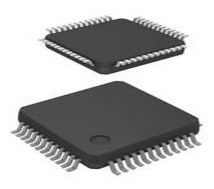 STM32F091CC Microcontroller: Features, Pinout, and Datasheet
STM32F091CC Microcontroller: Features, Pinout, and Datasheet13 January 20221450
 MAX232 Driver IC: Datasheet, Pinout and Circuit
MAX232 Driver IC: Datasheet, Pinout and Circuit10 September 20216488
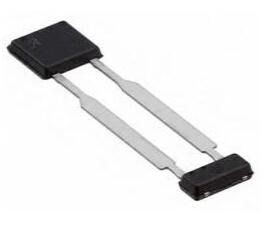 A1688 High Accuracy Sensor IC:Datasheet, Pinout, Features and Benefits
A1688 High Accuracy Sensor IC:Datasheet, Pinout, Features and Benefits03 September 2021644
 SPC584Bx: 32-bit Power Architecture Microcontroller for Automotive ASIL-B Applications
SPC584Bx: 32-bit Power Architecture Microcontroller for Automotive ASIL-B Applications29 February 2024184
![DS18B20 Temperature Sensor[FAQ+Video]: Circuit, Equivalents,and Pinout](https://res.utmel.com/Images/Article/50daa56f-b3f7-4f8a-8cf2-00186ccb88bd.jpg) DS18B20 Temperature Sensor[FAQ+Video]: Circuit, Equivalents,and Pinout
DS18B20 Temperature Sensor[FAQ+Video]: Circuit, Equivalents,and Pinout17 April 20252426
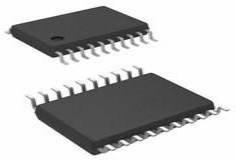 8533AG-01 LVPECL Fanout Buffer: Pinout, Features and Datasheet
8533AG-01 LVPECL Fanout Buffer: Pinout, Features and Datasheet28 March 2022260
 Adesto Technologies RM25C512C-LTAI-B Memory: A Comprehensive Technical Overview
Adesto Technologies RM25C512C-LTAI-B Memory: A Comprehensive Technical Overview18 March 20242507
 Shenzhen: This Year Will Focus on Promoting SMIC and CR Micro 12-inch Project
Shenzhen: This Year Will Focus on Promoting SMIC and CR Micro 12-inch Project13 April 20224618
 Top Picks for Circuit Breakers This Year
Top Picks for Circuit Breakers This Year10 July 20251145
 FPGA in Industry and Communication: Key Players, Technologies, and Future Trends
FPGA in Industry and Communication: Key Players, Technologies, and Future Trends07 March 20251271
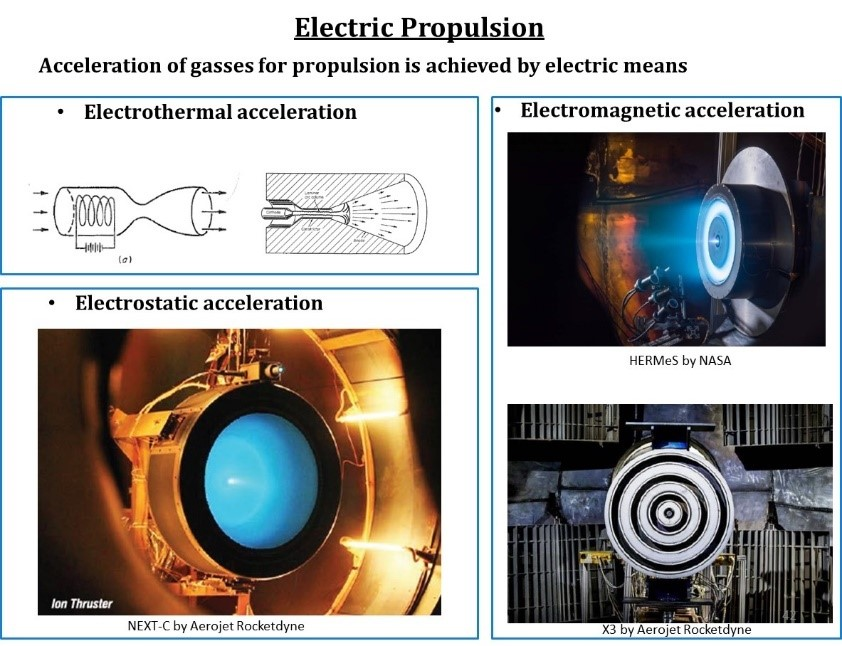 The Role of SiC in Extended Space Missions
The Role of SiC in Extended Space Missions20 September 20241992
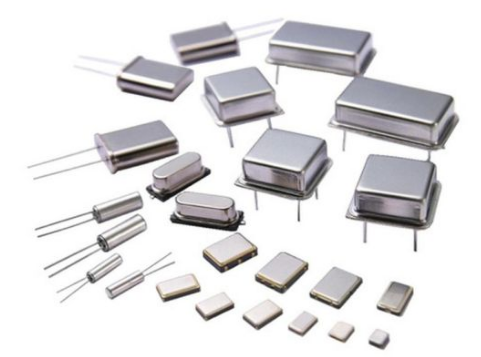 Understanding the Crystal Oscillator: Construction, Working Principles and Applications
Understanding the Crystal Oscillator: Construction, Working Principles and Applications08 July 20242753
 Building a Smart Home System: Exploring Arduino Applications
Building a Smart Home System: Exploring Arduino Applications13 March 20242349
 RGB LED: Circuit, Difference and Application
RGB LED: Circuit, Difference and Application25 March 20215526
 Advancements and Challenges of High Frequency Converters
Advancements and Challenges of High Frequency Converters19 June 20231624
Linear Technology/Analog Devices
In Stock
United States
China
Canada
Japan
Russia
Germany
United Kingdom
Singapore
Italy
Hong Kong(China)
Taiwan(China)
France
Korea
Mexico
Netherlands
Malaysia
Austria
Spain
Switzerland
Poland
Thailand
Vietnam
India
United Arab Emirates
Afghanistan
Åland Islands
Albania
Algeria
American Samoa
Andorra
Angola
Anguilla
Antigua & Barbuda
Argentina
Armenia
Aruba
Australia
Azerbaijan
Bahamas
Bahrain
Bangladesh
Barbados
Belarus
Belgium
Belize
Benin
Bermuda
Bhutan
Bolivia
Bonaire, Sint Eustatius and Saba
Bosnia & Herzegovina
Botswana
Brazil
British Indian Ocean Territory
British Virgin Islands
Brunei
Bulgaria
Burkina Faso
Burundi
Cabo Verde
Cambodia
Cameroon
Cayman Islands
Central African Republic
Chad
Chile
Christmas Island
Cocos (Keeling) Islands
Colombia
Comoros
Congo
Congo (DRC)
Cook Islands
Costa Rica
Côte d’Ivoire
Croatia
Cuba
Curaçao
Cyprus
Czechia
Denmark
Djibouti
Dominica
Dominican Republic
Ecuador
Egypt
El Salvador
Equatorial Guinea
Eritrea
Estonia
Eswatini
Ethiopia
Falkland Islands
Faroe Islands
Fiji
Finland
French Guiana
French Polynesia
Gabon
Gambia
Georgia
Ghana
Gibraltar
Greece
Greenland
Grenada
Guadeloupe
Guam
Guatemala
Guernsey
Guinea
Guinea-Bissau
Guyana
Haiti
Honduras
Hungary
Iceland
Indonesia
Iran
Iraq
Ireland
Isle of Man
Israel
Jamaica
Jersey
Jordan
Kazakhstan
Kenya
Kiribati
Kosovo
Kuwait
Kyrgyzstan
Laos
Latvia
Lebanon
Lesotho
Liberia
Libya
Liechtenstein
Lithuania
Luxembourg
Macao(China)
Madagascar
Malawi
Maldives
Mali
Malta
Marshall Islands
Martinique
Mauritania
Mauritius
Mayotte
Micronesia
Moldova
Monaco
Mongolia
Montenegro
Montserrat
Morocco
Mozambique
Myanmar
Namibia
Nauru
Nepal
New Caledonia
New Zealand
Nicaragua
Niger
Nigeria
Niue
Norfolk Island
North Korea
North Macedonia
Northern Mariana Islands
Norway
Oman
Pakistan
Palau
Palestinian Authority
Panama
Papua New Guinea
Paraguay
Peru
Philippines
Pitcairn Islands
Portugal
Puerto Rico
Qatar
Réunion
Romania
Rwanda
Samoa
San Marino
São Tomé & Príncipe
Saudi Arabia
Senegal
Serbia
Seychelles
Sierra Leone
Sint Maarten
Slovakia
Slovenia
Solomon Islands
Somalia
South Africa
South Sudan
Sri Lanka
St Helena, Ascension, Tristan da Cunha
St. Barthélemy
St. Kitts & Nevis
St. Lucia
St. Martin
St. Pierre & Miquelon
St. Vincent & Grenadines
Sudan
Suriname
Svalbard & Jan Mayen
Sweden
Syria
Tajikistan
Tanzania
Timor-Leste
Togo
Tokelau
Tonga
Trinidad & Tobago
Tunisia
Turkey
Turkmenistan
Turks & Caicos Islands
Tuvalu
U.S. Outlying Islands
U.S. Virgin Islands
Uganda
Ukraine
Uruguay
Uzbekistan
Vanuatu
Vatican City
Venezuela
Wallis & Futuna
Yemen
Zambia
Zimbabwe










